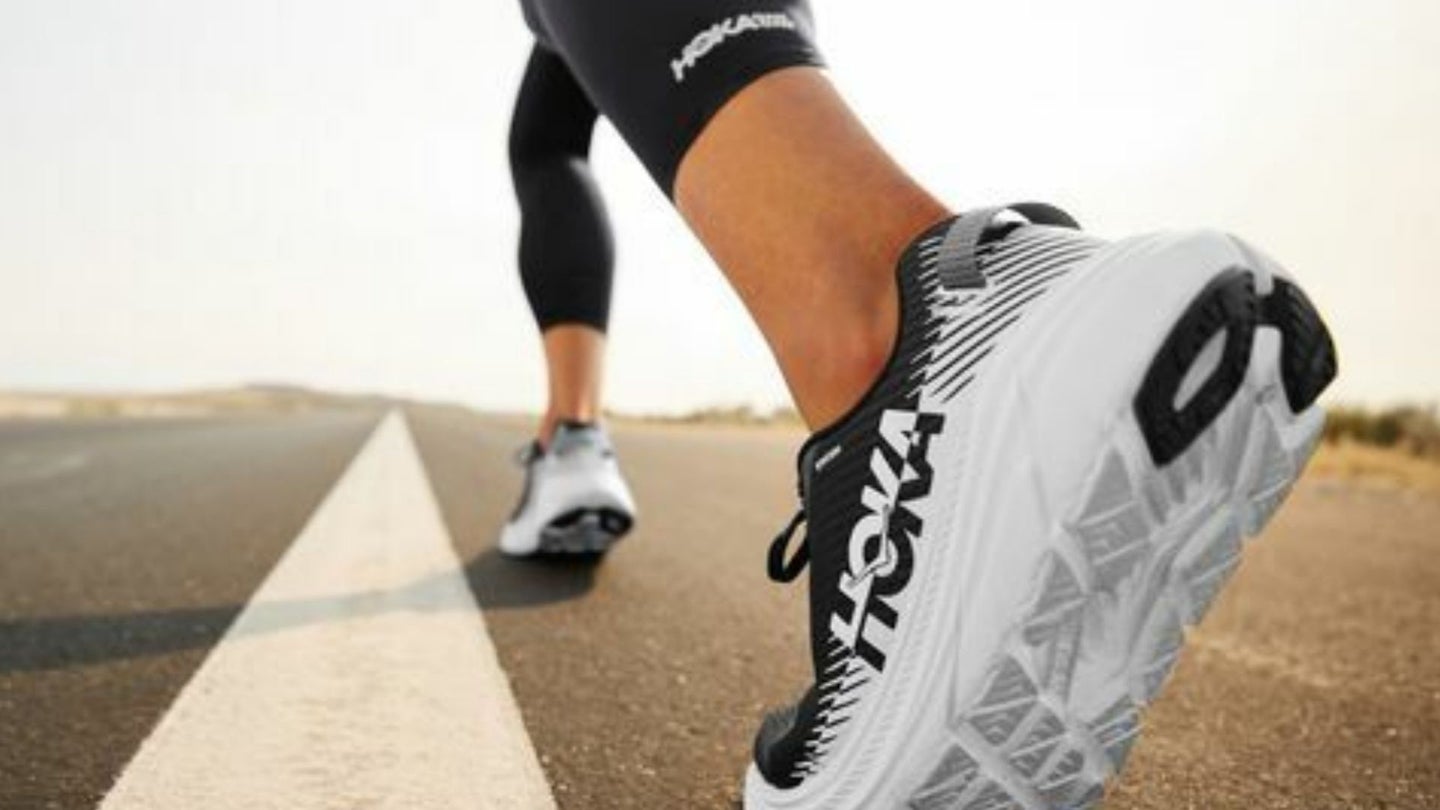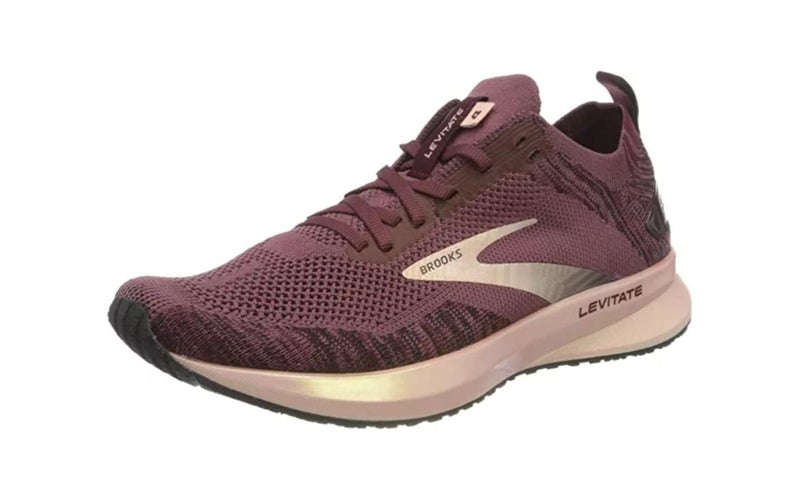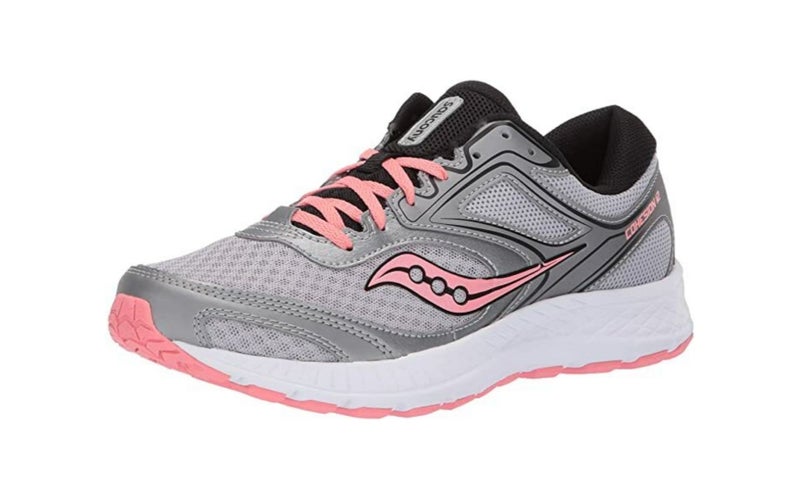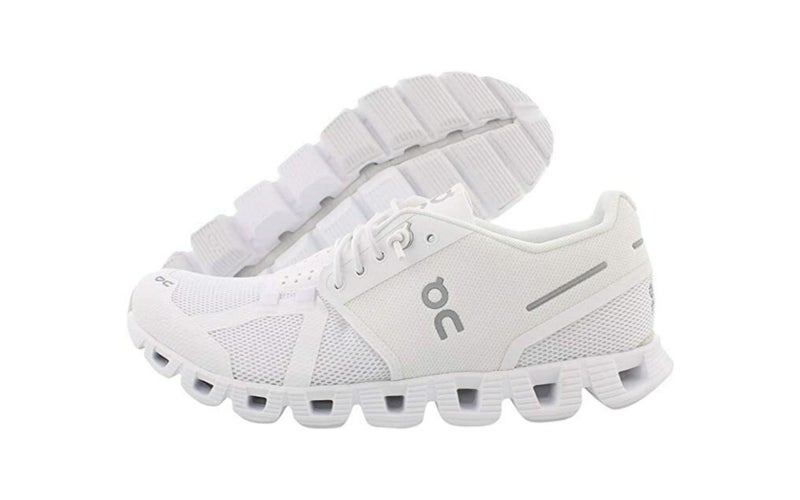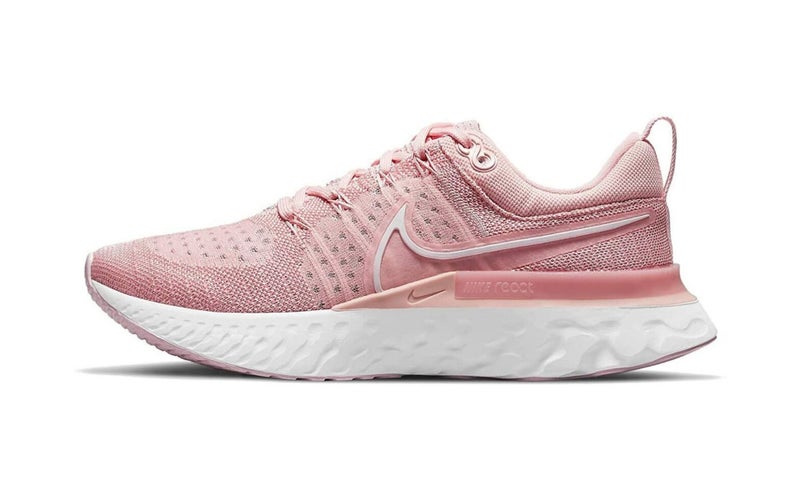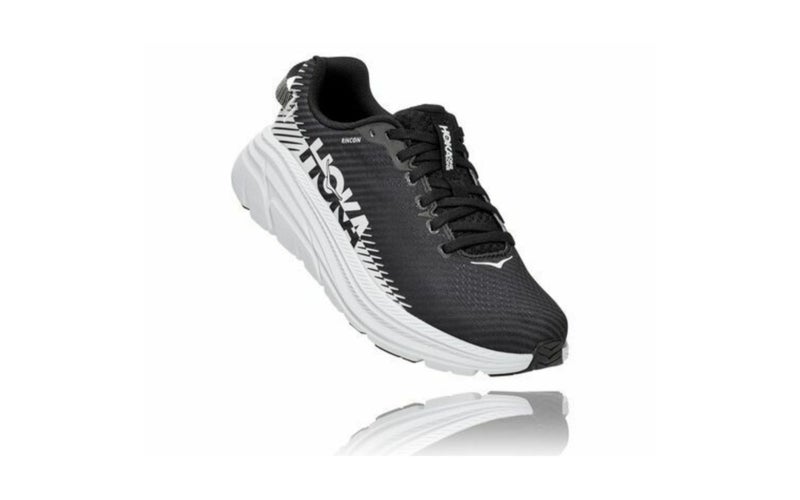We may earn revenue from the products available on this page and participate in affiliate programs.
If you run twice a year to just check the box on a physical fitness test or you are crazy enough to run marathons and ultra races, the whole point of investing in decent running shoes is to reduce your chances of injuring yourself. Regardless of how often you run, it’s important to find a running shoe that is light enough not to weigh you down but has enough marshmallowy goodness in the midsole to absorb the shock of your feet pounding the pavement, stride after stride, so your knees and hips don’t have to.
Despite the importance of good running shoes, it can prove extremely difficult to sort the wheat from the chaff when it comes to choosing the right ones; indeed, it can often seem intimidating to test out shoes in a running specialty store. With so many conflicting opinions about what constitutes a “good” shoe for the average runner, finding the right fit at a reasonable price point can feel all but impossible.
Never fear: Whether you are a seasoned ultra-marathoner or if you only run when being chased by a wild animal, we have you covered. We’ve tested out five of the top neutral, high-cushion women’s running shoes on the market to help you feel good mile after mile. Here’s what our testing revealed.
With more bounce to the ounce, the Brooks Levitate 4 road runner is a well-priced shoe at $109.95, with exceptional cushioning. I could go on and on about how springy the Levitate 4 feels, but the big takeaway for this shoe is that it is a game-changer for those of us who suffer from tight hips and sore knees. According to Brooks, the DNA AMP midsole “ …returns energy by absorbing it as your foot hits the ground, then sending it straight back up to you,” resulting in a supportive yet ultra cushiony feel. rnrnAlthough the Levitate 4 is 20 percent lighter than the previous generation, it is definitely not at the expense of comfort thanks to the shoe’s proprietary DNA AMP midsole. Despite its maximalist cushioning, the Levitate 4 looks sleek and made for racing compared to its competitors — a testament to Brooks technology. The Leviate 4 does have a narrow fit, but the knit fabric and placement of the vamp and laces allow for the laces to easily be adjusted to allow the toes to expand comfortably, and the interior sock-like design contributes to a Snuggie-like fit for your feet. Best of all, the shoe is designed to return energy to the foot and leg, and the unique arrow pattern on the rubber sole helps to grip the pavement so you can quickly get to your next stride.rn
- Cushioning: Designed to neutralize impact of foot strikes on hard pavement
- Toe box and lacing system: Narrow toe box
- Midsole and outsole: Springy, light, spry
- Interior fit: Thin tongue and interior walls contribute to smooth, soft interior fit
Won’t break the bank
Sleek without sacrificing comfort
Springy and bouncy
Narrow fit
Run a half size small
Hard plastic on heel can rub
Like the purple unicorn of running shoe manufacturers, Saucony has long been known as a top manufacturer of high-quality and affordable running shoes — a combination that is increasingly hard to find. With a purchase price of less than $50, the Cohesion 12 certainly doesn’t disappoint. These shoes aren’t flashy, but the shoe’s features where Saucony concentrates its design dollars are those that are designed to keep your foot stable and cushioned on your daily runs, mile after mile. I can personally attest to this, as I have been a repeat customer of Saucony for decades and have never been disappointed by their running shoes.rnrnThe comfort of the Cohesion 12 boils down to the shoe’s generous helping of proprietary VERSAFOAM cushioning in the midsole, which acts as a shock absorber when your feet hit the pavement and provides stability. A traditional padded tongue and heel collar make for a snug interior feel, although the lacing system does extend the furthest down the toe than any of the other shoes we tested, and can lead to over-tightening stresses on the toe box. While the Cohesion 12 lacks some springiness and traction control due to its hard rubber outsole and skimps on nice-to-haves like an interior sock liner, this shoe provides excellent cushion, comfort, and support for the long haul. They aren’t flashy, but let’s be real, until someone invents running shoes with motors that help to propel me across the finish line faster, paying more for sneakers probably isn’t worth it.
- Cushioning: Cushioning maximizes comfort without sacrificing weight
- Toe box and lacing system: Narrow toe box, but the stretchy knit material help alleviate pressure on toes
- Midsole and outsole: High marks for support, comfort, and consistency
- Interior fit: Basic but comfortable
Low price point
Comfortable ride, mile after mile
Durable fabric toe box and outsole
Made for everyday running
Tight/narrow toe box
Not for wearing without a thin sock
Lacks traction in wet conditions
The Cloud Stratus is at the high end of the running shoe price range, but the technology makes a difference. The Cloud Stratus has the proprietary honeycomb sole design and a patented layer between the midsoles and outsoles called the Speedboard, which helps harness energy from foot impact to send it back to the leg for a more powerful push off of the pavement. According to the design team, this helps to create a smoother takeoff, increased cushioning, and maximizes “runners roll,” or the smooth motion of the heel and forefoot — excellent for long distances. rnrnI don’t know if I primed my brain about the technology behind the shoes or if there were other factors at play, but I did run my fastest seven miles in my new Cloud Stratus shoes, and my heart rate was absurdly low the whole run. I also felt really energized, and were it not for the stiff feeling of the soles when my feet hit the pavement, these shoes would have ranked as the best overall.
- Cushioning: Cloud technology is unparalleled
- Toe box and lacing system: Unique lacing system designed to feel secure and supportive without constraining toes
- Midsole and outsole: Honeycomb air chambers and airy cushioning make for smooth and comfortable ride
- Interior fit: No interior tags, silky liner, and an integrated design create a snug, sock-like fit with no tongue slippage
Extra set of laces included
Honeycomb design allows for greater responsiveness to your stride without extra weight
Sole construction cushions vertically and horizontally for greater energy return
Specially designed for comfort over long distances
At the higher end of the price range for running shoes
High heel collar can be uncomfortable on the ankle bone and achilles
Soles felt hard upon impact
After reading a review on the shoe’s design in Runner’s World earlier this year on the React Infinity Run Flyknit 2 (a mouthful, I know), I was eager to test them out. At a purchase price of $234, they represent the Rolls Royce of running shoes and are way more than I would normally spend. But given the bold claim that their Flyknit technology helps to reduce injuries, I thought the shoe would be worth adding to the testing lineup.rnrnThese shoes are packed with cushioning thanks to a hefty helping of Nike’s proprietary React foam, which sets out to be lightweight, durable, and provides both “cushioning and energy.” According to Nike, the React technology means it “reacts swiftly to each step, bouncing back to its original state to ensure a consistent underfoot feel, stride after stride, mile after mile.” Add on top of that the Flyknit material of the upper, which snuggly holds the foot in place while reacting and stretching with movement of the toes, and you have a superbly comfortable, squishy but stable-feeling marshmallow of a shoe that is built for long distances.
- Cushioning: React cushioning like wearing pillows on your feet
- Toe box and lacing system: Stretchy material, lightweight tongue, and grommets for the last two lace holes make for a nice, stable fit
- Midsole and outsole: Light but cushy thanks to generous amount of React foam in the midsole
- Interior fit: More of a medial arch than other neutral running shoes
React foam makes it ideal for daily training runs
Maximum marshmallowy comfort
Did I mention the cushioning?
Breathable and lightweight
One of the most expensive shoes on the market
The medial arch can bother flat-footed runners
Annoying plastic tags on the insole
High collar can irritate the ankle bone
At a purchase price of around $115, the Rincon 2 falls at the lower end of the running shoe price range, but wow, what an amazing ride! Despite the Rincon 2 appearing a bit clunky because of the wide toe box and thick appearance of the midsole and outsole (kind of reminded me of wearing shoe boxes on my feet when I first put them on), appearances here are definitely deceiving. The shoes feel light as air and according to HOKA, their proprietary Meta-Rocker technology “…complements the natural gait cycle and reduces the height differential between heel and toe” to propel you forward. rnrnI can’t believe I ever ran marathons and ultra races without my HOKA One Rincon 2 shoes. They aren’t flashy or stylish, but they are a workhorse that are guaranteed to keep your feet feeling comfortable and springy, mile after mile.
- Cushioning: Think cushy without extra weight
- Toe box and lacing system: Laces extend the furthest down the toe box of all of the models tested
- Midsole and outsole: EVA midsole and Meta-Rocker maximize spring with a grippy outsole in wet conditions
- Interior fit: Pared-down tongue, moderately cushioned collar, and smooth, breathable fabric
Excellent value
Energizing shoe that can be used for daily training or ultra races
Snug fit and comfy ride make you want to keep going, mile after mile
Wider base adds to feeling of stability regardless of terrain
Outsole quickly wears out and sheds
Did I mention the outsole quickly wears out and sheds?
Lacing system can constrict toe box
Why you should trust us
As a former Marine, I’ve done my fair share of mandatory fun runs, but I didn’t discover the mental and physical pleasures of distance running until midway through my career. Since then, I’ve logged in eight marathons and multiple 50K and 50-mile ultra races. I tend to average between 30 and 45 miles of running per week depending on how much time I have, so you can imagine I have gone through my fair share of running shoes, and the more ultra races I do, the more cushioning I want. But despite the fact that I wear my running shoes more than any other shoes in my closet and I get a heck of a lot of miles out of them each week, I tend to be fairly stingy when it comes to how much I am willing to pay for them. So believe me when I say I am focused on both function and cost when reviewing shoes because unless they have motors in them, it simply isn’t worth spending $115 on a pair of running shoes, no matter how good the technology that goes into them.
Types of running shoes for women
Although expert opinions may differ on this, there are essentially six different kinds of running shoes based on activity and cushioning. But don’t be mistaken — all running shoes are ugly and should never be worn outside of the activity itself for fashion’s sake.
Racing flats
Racing flats, or minimalist shoes, are designed for long-distance racing, but to achieve a weight advantage, they sacrifice cushioning and have very little heel or insole support. According to one source, “research shows that for every ounce that you shave off the weight of a training shoe, you will run one second per mile faster.” Although they can provide advantages on race day for seasoned runners, for the average runner, if you, like me, are an average runner who isn’t going to break any world records on your next race, I recommend skipping them. In addition to their lack of comfort, prolonged use of running flats can actually cause injury as a result of the lack of support.
Maximalist shoes
You can probably tell that maximalist shoes are it for me, and the technological advancements big companies have achieved of late mean that you aren’t going to have to sacrifice anything for the shoes that give you the marshmallow ride of your life. The exact opposite of cement feeling shoes, maximalist running shoes are designed for every arch type and provide exceptional comfort, shock absorption, and energy return back to the foot. Don’t be fooled by their often clunky appearance — these shoes are designed to make you love the ride so you and your body can go back for more with little recovery time needed.
Trail running shoes
The purpose of these shoes is probably a no-brainer — yes, for running on trails and dirt. In fact, many trail shoes have a “stickier” outsole than road runners, providing a grippier ride for the long haul in wet, muddy, and rocky conditions. These shoes also tend to have more rigid midsoles and outsoles to protect the feet from roots and rocks, which coincidentally also creates a stiffer feel. Because of this rigidity, most experts recommend trail shoes not be used for road running as it can lead to lower extremity injuries.
Key features of running shoes for women
Midsole and outsole construction
Simply put, this is where cushioning, durability, and traction reside. The midsole also impacts the level of arch support a shoe provides, making it an important consideration when purchasing running shoes.
Toe box construction and lacing system
According to Protalus, an expert on foot alignment, “the structure of a shoe’s toe box can greatly influence foot health and even change the shape of some of the foot’s internal structures.” A combination of stretchy but supportive material is essential to allowing your toes room to expand so they don’t feel pinched. As you run, your feet will swell, so having some extra space in the toe box is essential. The shoe lacing system is linked to the toe box, and the further down towards the toes the laces extend the more likely the chance of overtightening the shoes. In addition to having wiggle room for your toes, you should also have a thumbs width of space between the ends of your toes and the end of your shoes.
Arch support
If you run in the wrong shoes for your arch type, you are just asking for an injury. The good news is that you can do a wet footprint test to find out whether you have high, flat, or normal arches. Technically, the foot has three arches, and they play such an important role in the body that without them, it would be really hard to do any physical activity. Your arch type will determine whether your ankles roll outward, inward, or are relatively stable, which then determines if you need a neutral, stability control, or motion control shoe. Of note, all of the shoes we tested here are for a neutral foot. For a good explanation of how your ankles are impacted by your arches, check out this informative post from RunRepeat, and if you want an expert, real-time opinion, head to your local running store for a treadmill test.
Benefits of running shoes for women
Running is a fantastic cardio activity with massive mental and physical health benefits, but unless you are Zola Budd, going barefoot on your runs probably isn’t a good option. Running shoes range in support, cushioning, and comfort and fit can be highly subjective. However, one thing is clear: The right shoe can help you achieve an endorphin boost and protect your feet, joints, and bones from shocks, falls, and pain.
Longevity
I turn 50 next year and want to be able to run into the sunset after my mind is gone. With that said, it’s important to me that I retain as much bone and muscle density as possible as I get older so that I can continue to be fit and active. You know that old saying, “motion is the lotion?” There’s a ton of truth there, and your long-term movement longevity has a lot to do with the investment you make in your shoes in the near term. Want to be like one of those geezers we’ve all been passed by during marathons? Invest in the right shoes today.
Injury prevention
According to the Feet First Clinic, “when we run, our momentum generates a lot of force — up to five times our body weight. Each time our feet strike the ground, our weight-bearing joints have to absorb this force.” After reading that, you probably understand why I prefer maximalist shoes with exceptional cushioning. Even if you don’t want all of that marshmallow fluffiness on your runs, the right shoes can provide just enough shock absorption to reduce lower extremity injuries like stress fractures and joint strains.
Pricing considerations of running shoes for women
Frequency of use
Most experts recommend replacing your running shoes after 300 to 500 miles, or every four to six months. Some also believe that rotating your shoes after every run can reduce fatigue and injury rates. The more miles you log each week, the more you may want to consider this option to speed your recovery.
Durability
I think I mentioned (several times!) how disappointed I was that I had two pairs of HOKA One Rincon 2 that wore out and started shedding from the soles. The first pair made me think I was dragging my feet on my runs, so I bought another only to find that this is the result of a manufacturing flaw. The average cost of running shoes is $121. If the average runner has to buy shoes two or three times per year, that means running isn’t a cheap hobby, so durability matters.
How we chose our top picks
Task & Purpose independently purchased and evaluated all of the shoes featured in this buying guide. While all of the shoes we tested for this review were designed for a neutral foot and maximum spring, top picks were selected based on their degree of cushioning, interior fit, and midsole/outsole construction. We also felt it was important to provide shoes from a variety of price points to demonstrate that just because a running shoe is more expensive, it doesn’t mean it’s automatically a better one.
FAQs on running shoes for women
You’ve got questions, Task & Purpose has answers.
Q: If I have flat feet, is there a certain type of running shoe I should buy?
A: Absolutely. If you have verified that you have flat feet by visiting a running store or doing a wet footprint test, you should probably consider purchasing neutral shoes.
Q: Does a more expensive shoe make it a better one?
A: Absolutely not, and the Saucony Cohesion 12 is a great example of how a less expensive shoe can actually rival the performance of pricier options for comfort, cushioning, and design. Shoe preference is also highly subjective since every body and foot is unique, so do your research and don’t be afraid to test out different shoes on a treadmill at the running store before you buy a pair. And don’t forget that shoes are like cars — the previous year’s model always goes on sale at some point.
Q: What can I do to bring the cost of new running shoes down?
A: Manufacturers rarely develop technology that is so incredible in a given year that it’s worth paying more for a new year’s shoe model. Search for the previous model online and you will be sure to save up to 60 percent.
Our gear section
Kate Germano served in the Marine Corps from 1996 to 2016. She’s a closet gear freak who enjoys schlepping packs with her better half on long Appalachian Trail section hikes. She’s also into true crime, Qwirkle tournaments, and animals, but definitely not Dungeons and Dragons.
